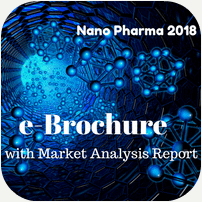Bita Rasoulian
Iran University of Medical Sciences, Iran
Title: Size of NPs in a nano drug formulation along with co-surfactant concentration will define transduction signals and cell biocompatibility
Biography
Biography: Bita Rasoulian
Abstract
Todays, nano-pharmaceutics as a major branch of nanomedicine has developed and there are some nanoformulations in market with less side effect and high efficacy and bioavailability in patients. Although, the basic investigation in this field has critical importance to design of safer nanoformulation but there are no reports that investigate in parallel the effect of ethanol concentrations as a major co-surfactant in nanoemulsions and some other type of nanoformulations along with the particle size. So, for the first time, NPs with equal and different particle size at same and different concentrations of ethanol were prepared and their influence on cell behavior and inflammatory and apoptosis genes were investigated. NPs with no ethanol were nominated 3.10 and at the ethanol concentrations of 3 and 5% were nominated 3.10.3 and 3.10.5 and if the temperature was applied they were nominated 3.10T, 3.10.3T and 3.10.5T. The particle size of 3.10 and 3.10.3 were same and had a mid diameter of 56.8nm, however temperature applying resulted in larger particle size in both group, 78.9 and 77.7nm, respectively. Increase of ethanol concentration from 3 to 5 % decreased particle size in non-temperature and temperature formulations to 47.9 and 70.7nm, respectively. Thermodynamic stability showed no sign of biphasic and physical appearance in the formulations and TLC disclosed that all the nano-formulations had equal Rf of 0.14. Based on the mentioned results, it might be said that temperature, surfactant, co-surfactant and the preparation method not damage to the curcumin as a drug substitute. In conclusion, it might be said that the particle with average diameter of 70-78nm were more up-taken by cells than smaller ones and induce more integrin gene expression and larger ones exhibit less damaging effects on cell membrane and induces less intracellular ROS production and afterwards iNOS gene expression and inflammatory gene of NF-KB. However, smaller nanoformulation around 49-56nm exhibited higher cell viability by the MTT assay, BCL2 gene expression and less NO production. Based on our findings, it seems that cell viability FAK2 gene expression have more direct effect than integrin gene over-expression and cell up take on cell migration and the 3.10, 3.10T and 3.10.5T induce higher cell migration than others, respectively that they were in good agreement with the FAK2 gene over-expression.

